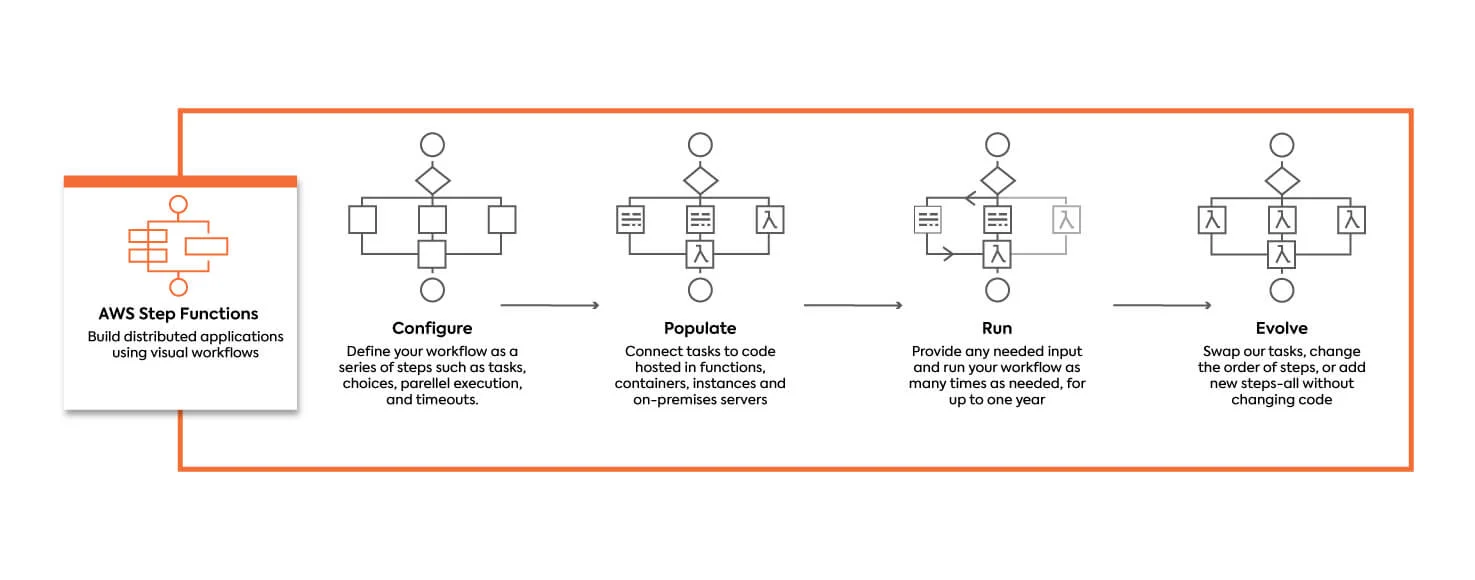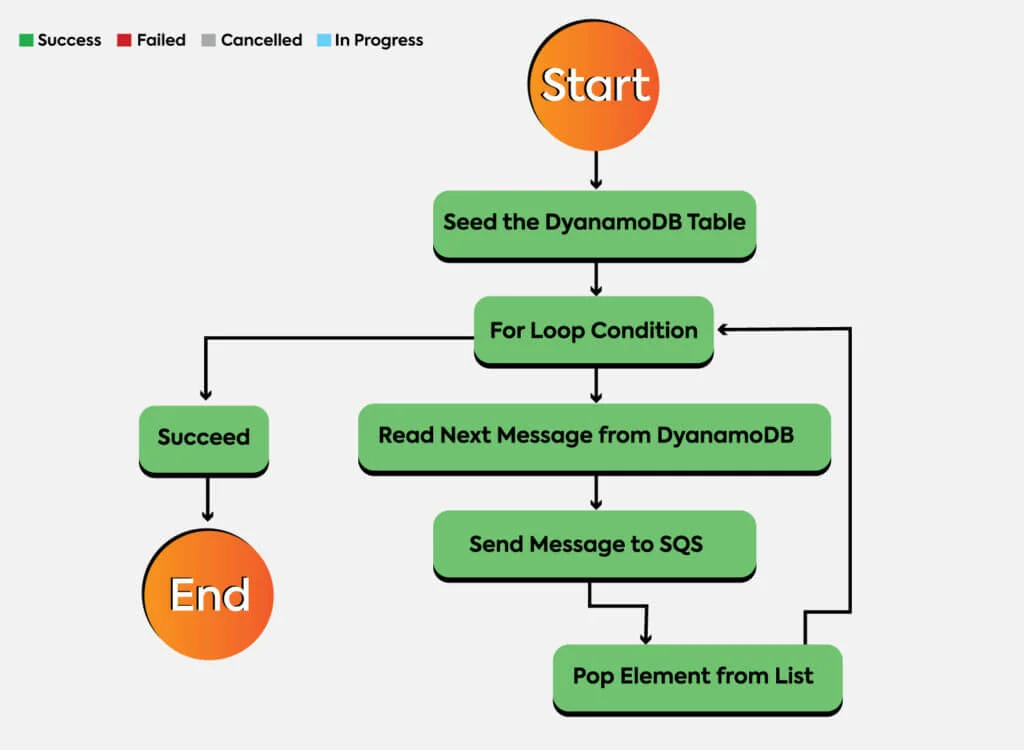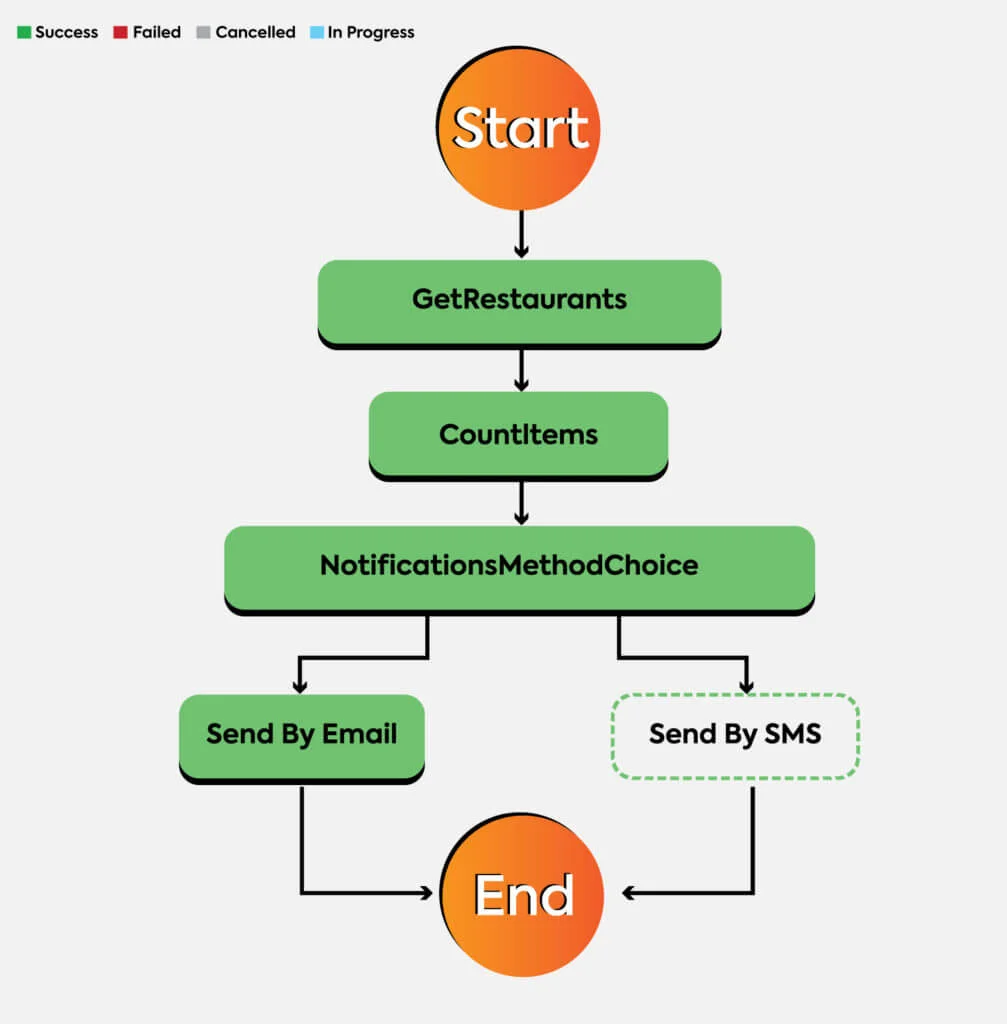Blog
AWS Step Functions & Simplifying Workflow: Features, Use Cases & Verdict
AWS Lambda was an out of the box service for designing solutions. But there were certain limitations to it. As Lambda adaptation grew, we came to realize that applications demand more than one such function. There can be multiple entry points, various functions, and more than one path of the workflow. As a result, programmers had to solve complex interconnecting processes and design a proper application workflow.
This turned out to be a cumbersome task. Furthermore, handling error cases added to the burden. These problems led AWS to develop Step Functions to address this issue. With Step Functions, you can orchestrate and streamline the Lambda Functions with efficient error handling. SNDK Corp offers you AWS Step Functions for a well-defined and simple workflow configuration.
What are Step Functions?
AWS Step Functions is a serverless orchestrator that helps to design and implement the complex workflows of your application with AWS Lambda functions. When you have multiple tasks that need proper sequencing with error handling, Step Functions coordinate between those tasks. Through its visual interface, you can create and run a series of Lambda functions where one state’s output acts as the input for another function.

Top 6 Features of Step Functions
AWS Step Functions offers a vast set of advantages over the traditional coding workflow configuration. Following are the features of Step Functions as per SNDK Corp-
-
Focus more on logic
With an extremely user-friendly interface, you can visualize the process path, which makes building applications much quicker. Therefore, you will invest more of your time in building the business logic rather than extensive coding. Step Functions enable you to change the path or conditions by just reorganizing the functions.
-
Improve Resilience
With advanced error handling features, such as built-in try-catch block and retry features, you can ensure that a complete transaction will take place only if all the conditions specified are met. In case of downtime, you can select the number of retries on a component before it goes to the failed state.
-
History of Execution
AWS Step Functions deliver real-time logs and dashboards of every execution, such as the state at every step as well as the successful and the failed steps. In case the transaction is not completed successfully, you can identify which function is causing the error and troubleshoot it as per your requirements. With visual monitoring, you can quickly verify if the processes are running in the order specified.

-
Automatic Scaling
In order to maintain a smooth workflow, Step Functions scale dynamically to handle large amounts of requests. This feature of Step Functions can be instrumental when it comes to handling spikes in requests for your application.
-
Write Less Code
The core intention of developing this service was to free programmers from writing complex codes. Using AWS Step Functions, you define your workflows, transforming complex code into easy to understand statements and diagrams.
-
Parallelization
You can run multiple methods simultaneously. A single state can further trigger multiple states making the workflow complete faster. This will save plenty of time and resources.
Use Cases
AWS Step Functions found its use in a wide range of products. Foodpanda and The Guardian are some of its customers. Here are two significant use cases of AWS Step Functions-
-
Sequence batch processing jobs
AWS Step Functions are the best solution for coordinating between multiple batch processes. It ensures that the processes are executed in the specified sequence and run successfully. Instead of maintaining another application to orchestrate the workflow manually, it can all be done with Step Functions.

-
Automation of tasks
Routine deployments, upgrades, and maintenance can be automated using AWS Step Functions. Since Step Functions automatically scale to timeouts and retry failed tasks, deployments are made more comfortable. Certain checks can be included at each stage, and hence the next process will commence only on approval.
Conclusion
Considering the facts outlined above, AWS Step Functions are very easy to use to link your services together and configure their execution workflow. They certainly take away the unnecessary burden to pen down the code yourself and maintain a complex platform. With a built-in primitive branching and error handling system, you can build your applications within a few minutes. With SNDK Corp, you get the most out of the AWS Step Functions to simplify and manage your enterprise.
